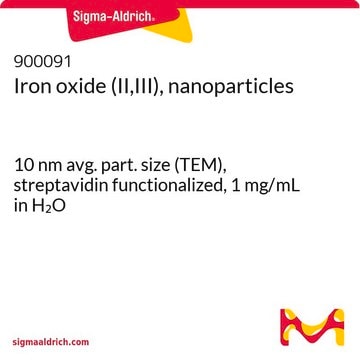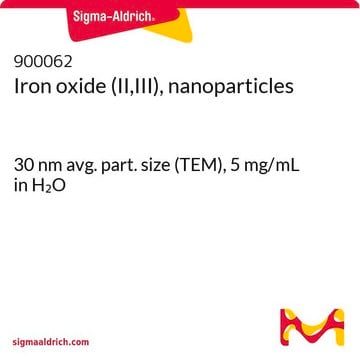900148
Iron oxide (II,III), nanoparticles
30 nm avg. part. size (TEM), streptavidin functionalized, 1 mg/mL in H2O
About This Item
Produtos recomendados
forma
dispersion
nanoparticles
Nível de qualidade
embalagem
pkg of 1 mL
condição de armazenamento
do not freeze
concentração
1 mg/mL in H2O
Tamanho médio da partícula
30 nm (TEM)
grupo funcional
streptavidin
temperatura de armazenamento
2-8°C
Procurando produtos similares? Visita Guia de comparação de produtos
Categorias relacionadas
Descrição geral
Aplicação
Informações legais
Código de classe de armazenamento
12 - Non Combustible Liquids
Classe de risco de água (WGK)
WGK 2
Ponto de fulgor (°F)
Not applicable
Ponto de fulgor (°C)
Not applicable
Certificados de análise (COA)
Busque Certificados de análise (COA) digitando o Número do Lote do produto. Os números de lote e remessa podem ser encontrados no rótulo de um produto após a palavra “Lot” ou “Batch”.
Já possui este produto?
Encontre a documentação dos produtos que você adquiriu recentemente na biblioteca de documentos.
Os clientes também visualizaram
Artigos
Professor Hui Mao explores the use of superparamagnetic iron oxide nanoparticles (INOPs) that offer an alternate contrast-enhancing mechanism.
Prof. Yadong Yin discusses various synthesis methods of magnetite nanocrystals and their applications in different fields.
Nossa equipe de cientistas tem experiência em todas as áreas de pesquisa, incluindo Life Sciences, ciência de materiais, síntese química, cromatografia, química analítica e muitas outras.
Entre em contato com a assistência técnica







